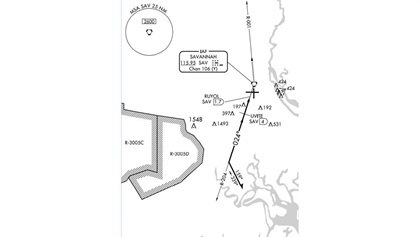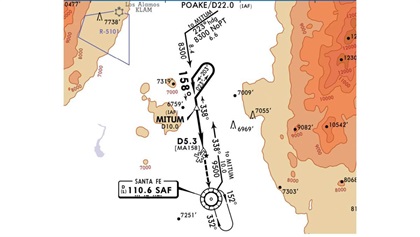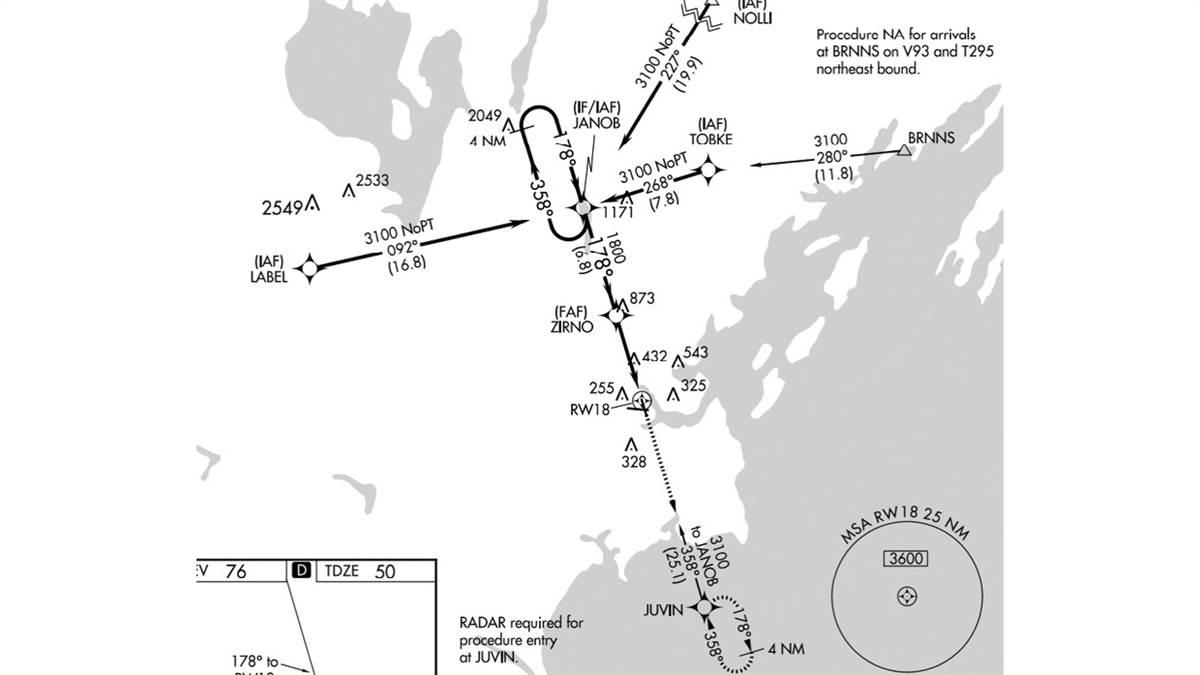IFR turn-arounds
Procedure turn dos and don’ts


The whole idea behind many instrument approaches is to track a final approach course that’s aligned with the destination runway—in other words, to make a straight-in approach. Sometimes this means flying outbound on the final approach course, then turning around to intercept that straight-in, final approach segment. In other words, making a procedure turn.
For several years, ATC has been simplifying approach procedures to minimize the chances of having to do procedure turns. And why not? With GPS navigation and its direct-to methodology, the terminal arrival area (TAA) concept with its “T”-oriented legs, and more “No PT” (no procedure turn) chart notations, procedure turns might seem to be going out of fashion. But don’t hold your breath. There are still many approaches and situations where you may have to perform procedure turns. You’ll know if you see one depicted on a chart. And if you see it in boldface, you gotta fly it—unless ATC gives you vectors or tells you otherwise. Which is also becoming more common.
There are two basic types of procedure turns. One is the 45/180 style, where you turn off the outbound course with a 45-degree heading change, fly for one minute, then make a 180-degree turn back to the inbound approach course. You’ll know when you’re about to intercept the final approach course because your course deviation indicator will begin to move off its stops and toward the CDI’s “bull’s-eye” position. When the needle centers, you’re ready to track the final approach course inbound.


A memory aid can help make sure you fly the procedure turn in style. One of the more popular is the “five Ts”: Throttle, Time, Turn, Tune, Talk. When you start the procedure turn, power back (Throttle) so you don’t go zooming around the turn and shooting past your intercept point. Note your clock (Time) because you’ll be flying for one minute once you’ve changed heading (Turn) to the first of the procedure turn’s legs. Dial in the approach’s inbound course on your horizontal situation indicator or other navaid (Tune) so that you’ll be ready to see the final approach course’s inbound leg moving to the bull’s-eye. With all this out of the way, call ATC (Talk) and tell the controller that you’ve entered the procedure turn.
It’s also worth checking the approach plate for any altitude restrictions involving any holding procedure. Equally important is to remain on the correct side of the final approach course (or its extension). If the plate shows the procedure turn on the west side of the final approach course, that’s where you stay. Obstacles or terrain may well be on the “non-procedure turn” side—or holding pattern too, for that matter—so there’s no room for improvising.
Another type of procedure turn is pretty aggressive for instrument flying, and you might want to practice it in visual conditions to see if it’s right for you. This is the 90/270-degree maneuver. Instead of making that first turn at a 45-degree angle, you double it to a 90-degree turn, then make a 270-degree turn to intercept the final approach course inbound. You don’t hear much about this maneuver because things can happen fast during those big turns. The idea is to make your inbound intercept happen quickly. Then again, instrument flying is all about gradual changes, not steep bank and intercept angles. Besides, with all that turning it may take the same amount of time to do a 90/270 as the 45/180, depending on the winds aloft.
Another way of reversing course is the hold in lieu of procedure turn, abbreviated HILPT. As the name suggests, you’d use one of the recommended holding pattern entry procedures to enter the holding pattern, depending on your position and track, then make a trip around the pattern before exiting it and flying the rest of the approach.
A full discussion of holding patterns will have to wait for another time, but suffice it to say that the five Ts still apply, as do the corrections for maintaining the proper tracks and one-minute leg times. You’ll have to crab to track a straight course with crosswinds, and lengthen or shorten your outbound legs in order to make the holding pattern’s inbound leg last one minute.
Normally, you’d only make one trip around the holding pattern—enough to make the course reversal—then be cleared for the approach. Then again, if it’s not your lucky day and there are multiple airplanes in the holding pattern awaiting their turns, you could fly around the pattern several times. As previous airplanes are cleared for their approaches, ATC will “shake the box” and have you descend and continue holding at a new altitude, until it’s your turn.
Then again, you may luck out. ATC could give you vectors to sequence you to the final approach fix, relieving you of the chore of a holding pattern or procedure turn. I’ve even heard of ATC clearing a pilot to make a series of 360-degree turns to kill time while others shot an approach—well away from the approach’s legs, of course.



